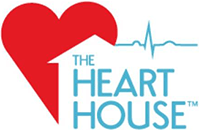AAA Stent Repair
What is AAA Stent Repair?
Stent repair is a relatively new procedure, but it has become the preferred treatment for Abdominal Aortic Aneurysms (AAAs) in many cases. This is because it is less invasive than open surgery, which is the traditional treatment for AAAs. During AAA stent repair, a surgeon inserts a tube-shaped device called a stent graft into the weakened section of the aorta. The stent graft is made of metal mesh and fabric, and it acts as a reinforcement, preventing the aneurysm from expanding further and reducing the risk of rupture.
This innovative procedure reduces the risk of complications, shortens recovery time, and offers a safer option for patients who may not be suitable candidates for open surgery. The goal of AAA stent repair is to stabilize the aneurysm and minimize the risk of rupture, a life-threatening event. Patients who undergo AAA stent repair can experience improved quality of life and reduced long-term health risks associated with untreated AAA.
Risks & Benefits of AAA Stent Repair
AAA Stent Repair is generally a safe and effective procedure, offering various benefits for patients. However, like any medical procedure, it is not without risks. Our team of cardiovascular specialists will thoroughly evaluate your individual health condition and guide you in weighing the potential risks against the advantages of undergoing the procedure. In general, here are the benefits and risks associated with AAA Stent Repair:
Benefits of AAA stent repair can include:
- Reduced Risk of AAA Expansion and Rupture:
Reinforcing the blood vessel wall provides more stability and takes pressure off the aneurysm. This additional support inhibits expansion and reduces the risk of rupture. - Alternative for High-Risk Patients
For individuals who are not suitable candidates for other treatments like Coronary Artery Bypass Graft (CABG) surgery, AAA Stent Repair provides a viable option to alleviate symptoms and improve heart function. - Minimally Invasive
Compared to traditional open-heart surgery, AAA Stent Repair requires smaller incisions, resulting in less trauma and discomfort, reduced recovery time, and shorter hospital stays.
Risks of AAA stent repair can include:
While EVAR/TEVAR (AAA stent repair) is generally safe with high success outcomes, there is still a slight risk of complications. These can include:
- Blood clots
- Infection
- Endoleak (continued flow of blood into the aneurysm after surgery)
- Deep vein thrombosis (DVT)
- Stroke
- Heart attack
- Kidney failure
- Graft movement or detachment
What to Expect Before, During, and After AAA Stent Repair
Your initial consultation with our cardiologist will include a review of your medical history, including any pre-existing conditions, medications you are taking, and previous surgeries or treatments. A thorough physical examination will also be conducted to assess your overall health and identify any signs or symptoms of an abdominal aortic aneurysm (AAA). This may include checking your blood pressure, heart rate, and breathing, as well as examining your abdomen for any swelling or tenderness. Various imaging tests may also be performed to visualize the size, shape, and location of the aneurysm. Common imaging techniques include ultrasound, CT scan, MRI, and angiography.
The procedure generally lasts for about 2-3 hours. You will be asked to fast for several hours before the procedure to prepare. Once in the operating room, you will be given general anesthesia, which will ensure that you are asleep and comfortable throughout the procedure. A small incision will be made in your groin area to access the blood vessels.
After AAA stent repair, it is normal to experience some pain or discomfort at the incision site. However, this should improve over time. Following the procedure, you will be closely monitored in the hospital for 1-2 days to ensure a smooth recovery and to watch for any potential complications. Your healthcare team will provide you with instructions for post-procedure care, including wound care and medication management. They will also schedule follow-up appointments to assess your progress and ensure the effectiveness of the stent graft in preventing further aneurysm growth. Here are some additional things to keep in mind after AAA stent repair:
- You may have some bruising or swelling around the incision site.
- You may have some blood in your urine for a few days.
- You may be tired and have decreased energy for a few weeks.
- You should avoid lifting anything heavy for several weeks.
- You should follow your cardiologist’s instructions carefully for wound care and activity restrictions.
Am I a Candidate for AAA Stent Repair
If you have been diagnosed with an abdominal aortic aneurysm (AAA), our cardiologists will carefully evaluate the following criteria to determine if AAA stent repair is the right treatment option for you:
- Aneurysm size
Typically, candidates for AAA stent repair have an aneurysm that measures at least 5.5 centimeters in diameter. Smaller aneurysms may not require immediate intervention and can be closely monitored. - Aneurysm growth rate
Rapidly growing or rapidly expanding aneurysms may require prompt intervention to prevent rupture, even if they are less than 5.5 cm in diameter. - Aneurysm rupture
Emergency intervention is often necessary to repair the damaged blood vessels and prevent life-threatening complications. - Overall health
Your medical history and overall health condition will be evaluated to ensure you can tolerate the procedure and recover successfully. - Anatomy & Location
The anatomy of the aorta and surrounding blood vessels is considered to determine if the stent graft can be safely placed and anchored. - Other treatment options
Your doctor will also consider other treatment options, such as traditional open surgery, and weigh the benefits and risks of each approach.
Prevent Abdominal Aortic Aneurysm Rupture with AAA Stent Repair
Photo Gallery
Video Gallery
Testimonials
Photo Gallery
Get To Know Our Cardiologists
In Search of Care? Request a Consultation Today





